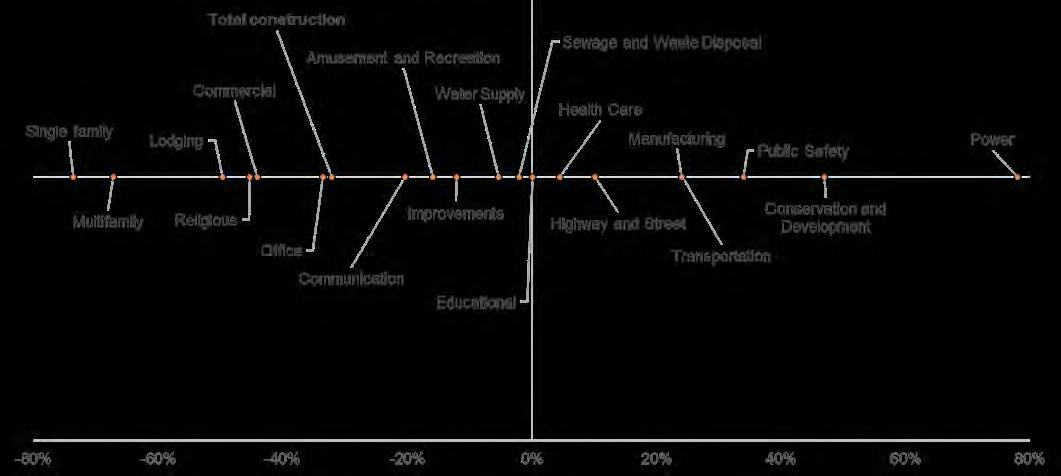
9 minute read
In the Midst of Chaos, There Is Also Opportunity
FEATURE
Advertisement
...or Examining the Upside of the Upside Down
by Gregg Schoppman, Principal, FMI
Sun Tzu, the author of The Art of War, was a military strategist and tactician that lived thousands of years ago. Yet he is arguably one of the most studied individuals by military minds, business leaders, coaches who leverage his countless principles and theories to drive or optimize for success. While there are many barbaric and insidious strategies in Sun Tzu’s mantras, the quote “In the midst of chaos, there is also opportunity,” appears to strike a chord in these challenging times. Most likely referring to a military force striking an enemy during a time when their forces appear in disarray, we can all use this refrain as businesses attempt to craft a new strategy amidst these challenging times.
COVID-19 has taken so much. Whether it is the loss of life and millions of sick individuals, or the deeper economic ramifications of the “Post-COVID-19 Shutdown” that continue to evolve. Given our druthers, I am sure every human would opt for a year where no pandemic required life to alter so greatly. However, Sun Tzu’s quote might have a deeper meaning for the world. English theologian and historian, Thomas Fuller, had a similar quote that has a similar theme – “It is darkest before dawn.” Great leaders recognize the pain and agony of any horrible situation but it is the greatest of them that identify the positive to create opportunity.
The Markets
Jay Bowman, Principal and Leading Researcher at FMI, has used another descriptor that may provide context for future strategy. “Bears and bulls exist in all economies.” Bowman references this quote when examining the last great recession:
His thesis is that even during the Great Recession, there were markets that thrived and grew. So much of the first half of 2020 has been focused on playing defense, whether it be against COVID-19 or simply battling the market forces. Strategies are tested all the time and markets are hardly static. In fact, there will be opportunity for nimble and agile businesses to
Figure 1 - 2006- 2011 Percent Change in Construction Spending Put in Place (US Total) SOURCE - FMI
be successful in the new normal. However, the great businesses do not sit still and wait for the market to come to them. There is no crystal ball that will help these businesses prognosticate on what the market foretells in the coming months, but the successful ones will act decisively and with purpose.
Productivity
Two inalienable truths have become evident in 2020 – a deeper appreciation for statistics and hygiene. As the world learned about distribution curves (and flattening them) it also became keenly aware of hygiene principles that we probably should have had before COVID19.That being said, the construction industry has seen an amazing forced metamorphosis in a short time. Starting a day’s work has been supplanted with a new set of rules related to hygiene and distancing. On the surface, the tedious yet necessary steps could be viewed as productivity killers. However, businesses are refocusing on elements like crew size, proper planning and activity prioritization that are more deliberate. Countless times, the phrase “Activity does not equal productivity” provides a subtle reminder to field teams that ambling around a jobsite without purpose is costly. The rules will require businesses to rethink their cost structure, but it will also help create opportunities for improvement. Not too mention, we probably needed to refocus on the jobsite cleanliness anyway.
Technology
It is a safe assumption that the world is ready for more sociability and less “virtual meeting.” However, as bandwidths were taxed to the hilt as town halls, production meetings, webinars and trainings were leveraged, the construction industry learned a valuable lesson. Technology has a place and done right, teams can be as or more productive than traditional means. Technology is also not limited to these millions of online meetings. In fact, these collaborative tools are just the tipping point for other advancements to enable better productivity, better quality, safer projects and a better experience for all. While the desire is to get back to normal, organizations should also be more focused on making that “normal +.”
Cashflow Focus
The balance sheet is another financial instrument that leaders have consulted with regularity recently. As businesses ``hunkered down”, controllers and CFO’s poured over the data to explore the firm’s resiliency. How long and how deep could businesses thrive, surviving on the cash in the business. Additionally, collecting outstanding receivables was another area of focus. For some readers, these last two statements appear “ordinary.” Put another way, should we not have been doing this all along? Similar happenings occurred during the last recession. Businesses become hyper focused on cashflow and cash reserves. It was as businesses ``got busy”, that they became distracted. This is an opportunity that should persist long after the pandemic has left our midst. It shouldn’t take something like this for businesses to forget the basic tenets of healthy best practices.
Business Expansion and Growth
Lastly, it is clear that some businesses will thrive while others may languish. Some may languish through no fault of their own, victims of horrible circumstances. When examined in totality – markets, productivity, technology, cash flow – best in class firms will be poised to leverage opportunities either created by businesses exiting a sector, geography, or niche or capitalize through acquisition, assuming there is something marketable in a target. In the end, the market will continue to have opportunities and the firms that maintain their agility and wherewithal will be in the right position. Survival of the fittest or some other Darwinian principle will dictate who succeeds. Those firms who find the upside in the upside down will be victorious.
About the Author

As a principal with FMI, Gregg specializes in the areas of productivity and project management. He also leads FMI’s project management consulting practice. He has completed complex and sophisticated construction projects in the several different niches and geographic markets. He has also worked as a construction manager and managed direct labor. FMI is a unique and fast-growing firm of professionals passionate about creating a better future for engineering and construction, infrastructure and the built environment throughout North America and around the world. For more information on FMI, please visit www.fminet.com or contact Schoppman by email at gschoppman@fminet.com.







FEATURE
by Chad Pearson, Plexxis Software, Inc.
As a former police officer I tend to be more sensitive to predatory behavior. An infallible truth you learn in police work is that wherever you find opportunity, you find honest people serving others, and dishonest people serving themselves (at the expense of others). So that said, there is immense opportunity in construction technology and underneath all the great people serving this opportunity, there is a predatory trend of unfair subscriptions. Thankfully, they are simple to spot and stop.
Unfair subscriptions have an imbalance of rights and obligations that can include a lack of transparency of total cost to onboard, misrepresentation of products and services and/or no reasonable options for cancellation without penalty.
Consider this—
Subscriptions were designed for instant value products such as magazines, Netflix or Amazon, where subscribers enjoy value as soon as they subscribe. Subscriptions were not meant for complex products that require labor-intensive set up, have no guarantee of adoption and that do not provide instant value.
People would never pay subscription fees to magazines, Netflix or Amazon if the content, entertainment and distribution centers were not ready upon subscription. In construction technology however, subscriptions fees ARE being charged for complex software BEFORE it is set up, configured or performing as sold.

How did unfair subscriptions become a trend?
Opportunistic investors behind the Construction Technology M&A explosion compelled some technology providers to apply simple subscription models to complex products in order to create predictable financial spreadsheets in an unpredictable industry.
This predatory trend hurts the industry as it shifts 100% of the risk of adoption onto contractors while investors collect and project revenue with certainty, even if the products are not delivering the value that was promised.
Like the scales of justice, balance needs to be restored through fair terms and obligations.
You can restore fairness to subscription by including the following three terms in your subscription agreement: 1. Define ‘go-live’ and defer subscription fees until the software is live. An example of how to define go-live for a typical construction accounting software would be: • AP payments are paid through software • Payroll runs (and/or) Payroll service export is completed through software • Client is posting to the GL • Complete entry of historical AIA/ progress billings details to enable accurate retention billing If you are considering other technology, I recommend collaborating with your prospective technology partner to define go-live in a way that is fair. 2.Establish a fair cancellation policy without penalty.
At our company, Plexxis Software, we allow customers to cancel at any time. We want to keep customers through our service, not because they are contractually obligated to us. At minimum, a fair compromise is 'at least' documenting promises made and defining key milestones in order to deliver what was sold in the sales process so you can establish an acceptable cancellation policy. 3. Ensure your technology partner provides detailed plans for adoption, including a complete list of tasks, commitments, milestones, skills and hours required. (NOTE that tasks, commitments, milestones etc. apply to both technology partner AND client)
Being aware of positive trends enables you to support them. Being aware of predatorial trends enables you to defeat them. Doing both enables you to help the industry evolve faster, more effectively and in the greatest way possible.
About the Author
Chad Pearson brings a unique perspective to AEC mixing 13 years in ConTech with careers in law enforcement and over 30 years competing in combat arts and coaching top professional fighters.
At Plexxis Software, Chad is the Dir. Biz Dev and Dealer of Truth & Happiness and help subcontractors unite their teams with technology. Chad also coaches Plexxis teammates on high performance during chaos and critical stress.
Chad's formal training includes a Bachelor of Arts, Crisis Resolution, Police Defensive Tactics, Use of Force, CBRN Response (Chemical, Biological, Radiological & Nuclear), emergency response, criminal investigation and outlaw motorcycle gang liaison work.




1 FORM. MULTIPLE QUALIFICATIONS.



Join us and take part in bringing standardized qualifications to the industry!
COMPASS aims to streamline the data collection process and help Subcontractors satisfy multiple qualification requests with our standardized form (the 1Form); eliminating the need to complete multiple unique forms. We are engaging General Contractors and other industry participants to adopt standardization, and would benefit from your support.
If you agree with standardization in the qualification process, please show your support by filling out this short survey







